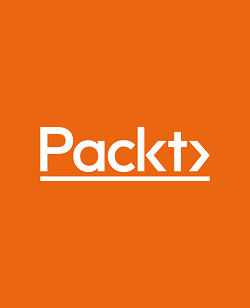-
Book Overview & Buying

-
Table Of Contents
-
Feedback & Rating

Becoming KCNA Certified
By :

Becoming KCNA Certified
By:
Overview of this book
The job market related to the cloud and cloud-native technologies is both growing and becoming increasingly competitive, making certifications like KCNA a great way to stand out from the crowd and learn about the latest advancements in cloud technologies.
Becoming KCNA Certified doesn't just give you the practical skills needed to deploy and connect applications in Kubernetes, but it also prepares you to pass the Kubernetes and Cloud Native Associate (KCNA) exam on your first attempt.
The book starts by introducing you to cloud-native computing, containers, and Kubernetes through practical examples, allowing you to test the theory out for yourself. You'll learn how to configure and provide storage for your Kubernetes-managed applications and explore the principles of modern cloud-native architecture and application delivery, giving you a well-rounded view of the subject. Once you've been through the theoretical and practical aspects of the book, you'll get the chance to test what you’ve learnt with two mock exams, with explanations of the answers, so you'll be well-prepared to appear for the KCNA exam.
By the end of this Kubernetes book, you'll have everything you need to pass the KCNA exam and forge a career in Kubernetes and cloud-native computing.
Table of Contents (22 chapters)
Preface
In Progress
| 0 / 10 sections completed |
0%
Part 1: The Cloud Era
In Progress
| 0 / 1 sections completed |
0%
 Free Chapter
Free Chapter
Chapter 1: From Cloud to Cloud Native and Kubernetes
In Progress
| 0 / 8 sections completed |
0%
Chapter 2: Overview of CNCF and Kubernetes Certifications
In Progress
| 0 / 8 sections completed |
0%
Part 2: Performing Container Orchestration
In Progress
| 0 / 1 sections completed |
0%
Chapter 3: Getting Started with Containers
In Progress
| 0 / 9 sections completed |
0%
Chapter 4: Exploring Container Runtimes, Interfaces, and Service Meshes
In Progress
| 0 / 9 sections completed |
0%
Part 3: Learning Kubernetes Fundamentals
In Progress
| 0 / 1 sections completed |
0%
Chapter 5: Orchestrating Containers with Kubernetes
In Progress
| 0 / 8 sections completed |
0%
Chapter 6: Deploying and Scaling Applications with Kubernetes
In Progress
| 0 / 8 sections completed |
0%
Chapter 7: Application Placement and Debugging with Kubernetes
In Progress
| 0 / 7 sections completed |
0%
Chapter 8: Following Kubernetes Best Practices
In Progress
| 0 / 8 sections completed |
0%
Part 4: Exploring Cloud Native
In Progress
| 0 / 1 sections completed |
0%
Chapter 9: Understanding Cloud Native Architectures
In Progress
| 0 / 8 sections completed |
0%
Chapter 10: Implementing Telemetry and Observability in the Cloud
In Progress
| 0 / 7 sections completed |
0%
Chapter 11: Automating Cloud Native Application Delivery
In Progress
| 0 / 7 sections completed |
0%
Part 5: KCNA Exam and Next Steps
In Progress
| 0 / 1 sections completed |
0%
Chapter 12: Practicing for the KCNA Exam with Mock Papers
In Progress
| 0 / 5 sections completed |
0%
Chapter 13: The Road Ahead
In Progress
| 0 / 4 sections completed |
0%
Assessments
In Progress
| 0 / 13 sections completed |
0%
Index
In Progress
| 0 / 2 sections completed |
0%
Other Books You May Enjoy
In Progress
| 0 / 4 sections completed |
0%
Customer Reviews
